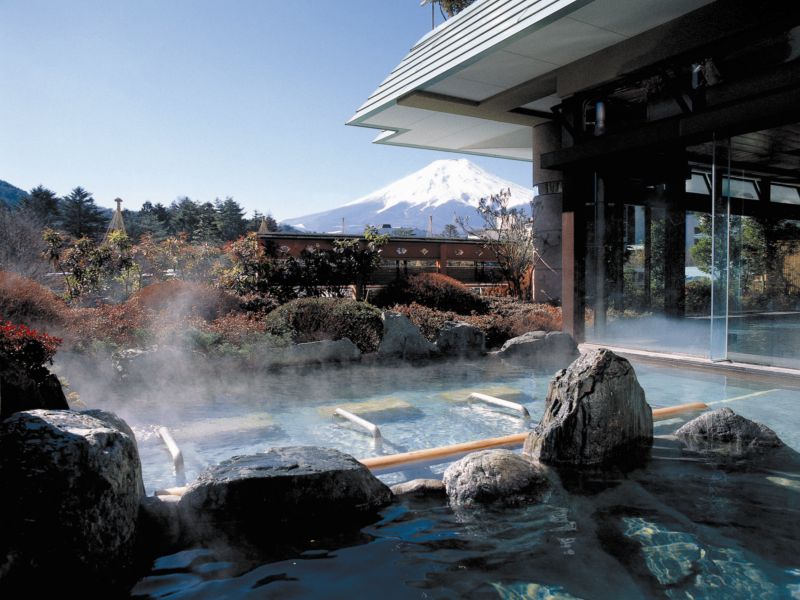 An uniquely Japanese tradition, the izakaya is is a favorite evening meeting place and hangout for salary men and women, working girls, locals and school buddies.
An uniquely Japanese tradition, the izakaya is is a favorite evening meeting place and hangout for salary men and women, working girls, locals and school buddies. An izakaya (居酒屋) is a Japanese drinking establishment or pub that also serves food to accompany the drinks. They are popular places for after-work drinks and casual dinner parties in a lively atmosphere.
Most izakayas have a red lantern hanging near their doorway, making them easily identifiable. Izakayas are often called akachōchin ("red lantern") after the red paper lanterns that are traditionally displayed outside. This usually refers to smaller places not affiliated with a chain.
Depending on the izakaya, customers sit on tatami mats and dine from low tables in the traditional Japanese style, or sit on chairs and drink/dine from tables. Many izakaya offer a choice of both, as well as seating by the bar.
Once you are seated you will be be given an oshibori (wet towel) for cleaning your hands. Then your server will bring an otōshi or tsukidashi (a small appetizer) for each person. This is local custom and usually charged onto the bill instead of an entry fee. Japanese people in Kantō region (Tokyo vicinity) call it otōshi and people in Kansai (Osaka vicinity) call it tsukidashi.
The menu may be on the table, or displayed on walls. Picture menus are great! They are common in larger izakaya. Food and drink can be ordered as often as you like. They are brought to the table, and the bill is added up at the end of your meal. Unlike other Japanese styles of eating, food items are usually shared by everyone at the table.
 Izakaya were traditionally down-to-earth places where men drank sake and beer after work. You can still find them, but the now they are complemented by a growing population of groups of women and students. Izakaya today cater to a quite a range of clientele – including hungry and thirsty foreigners. So ask for an English menu if you don’t see one. More places have them now.
Izakaya were traditionally down-to-earth places where men drank sake and beer after work. You can still find them, but the now they are complemented by a growing population of groups of women and students. Izakaya today cater to a quite a range of clientele – including hungry and thirsty foreigners. So ask for an English menu if you don’t see one. More places have them now. Izakaya come in all varieties. Chain izakaya became popular in the ’80s, and continue to draw patrons today. Tengu is an example of a chain. It is large, noisy and crowded, with lots of eating and drinking choices. Places like this start at a medium hum and get progressively louder and more rowdy as the night goes on. Chain izakaya often offer some dining options known as nomihodai ("all you can drink") and tabehodai ("all you can eat"). For a set price per person, customers can continue ordering as much food and / or drink as they wish, with a usual time limit of two or three hours.
Some izakaya are known for a certain food. Yakitori-ya specialize in yakitori (grilled meat on a stick). The skewers are often grilled in front of customers. Others are known for their intimate ambiance and tight space. Those humble pubs may have a seating capacity of ten!
Izakaya food is usually served in appetizer-sized portions. Many items are designed to be shared. What might be on the menu?
- Yakitori - grilled chicken on a skewer
- Kushiyaki - grilled meat or vegetable skewers
- Sashimi - slices of raw fish
- Karaage - bite-sized fried chicken
- Croquette – medallion of creamy mashed potato inside, crunchy fried coating outside
- Bacon Aspara – Asparagus spears wrapped in bacon
- Edamame - boiled and salted soybean pods
- Tofu
- Hiyayakko - chilled silken tofu with toppings
- Agedashi tofu - deep fri
 ed tofu in broth
ed tofu in broth
- Tsukemono - pickles
Izakaya drink choices depend on the establishment, but the usual selections include draft beer, sake, shochu. Drinks are reasonably priced, and remember, no tipping. The izakaya is uniquely Japanese tradition, and one of the best ways to become submerged in the culture and even meet a few locals. Going to an izakaya can be the best experience ever. Let the warm and friendly folks there be your welcoming committee!
 The JapanFest event took place in Atlanta, Georgia on Sept. 17-18. It's an annual event that attracts thousands and showcases Japanese culture, talent, and commerce in the southeastern U.S.
The JapanFest event took place in Atlanta, Georgia on Sept. 17-18. It's an annual event that attracts thousands and showcases Japanese culture, talent, and commerce in the southeastern U.S.






